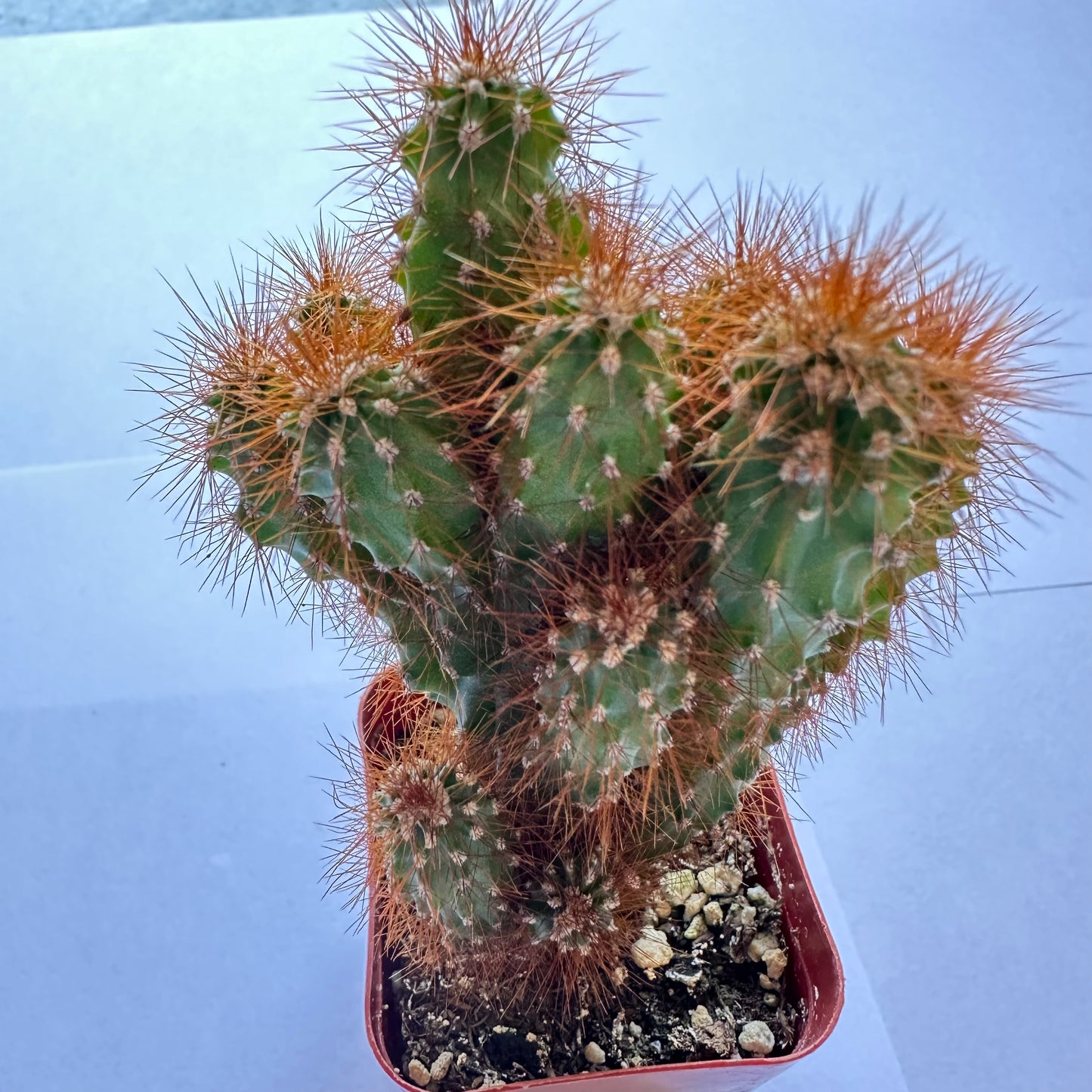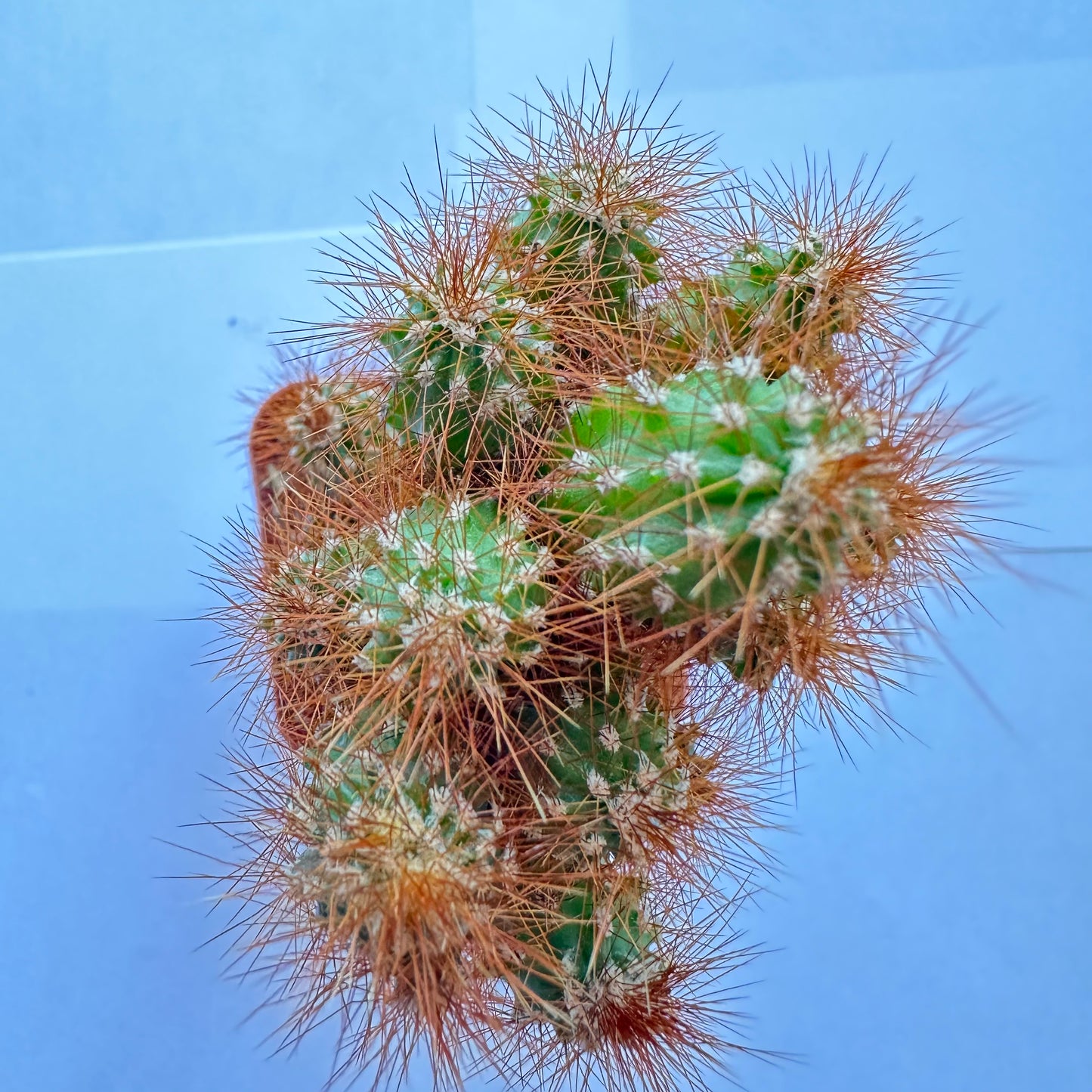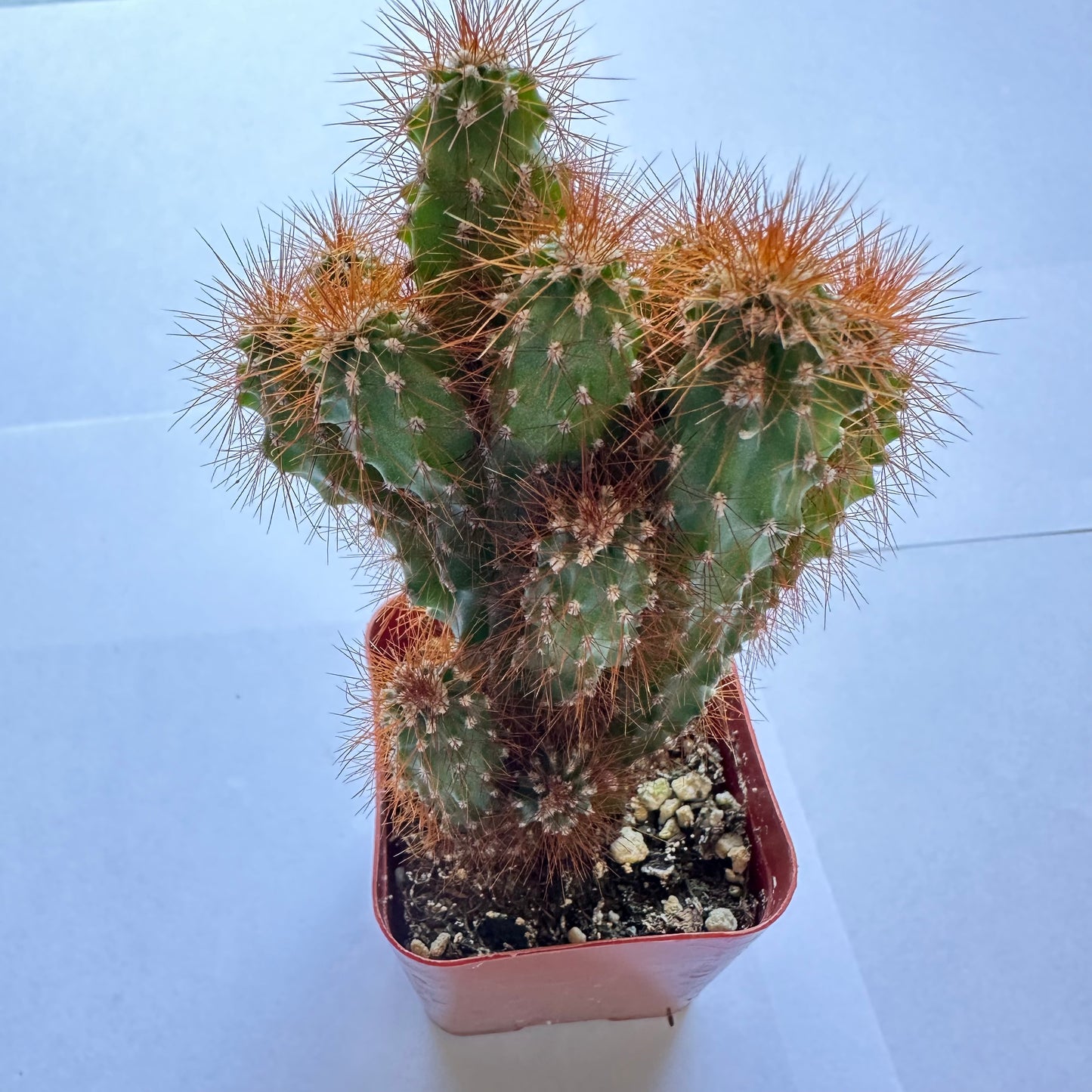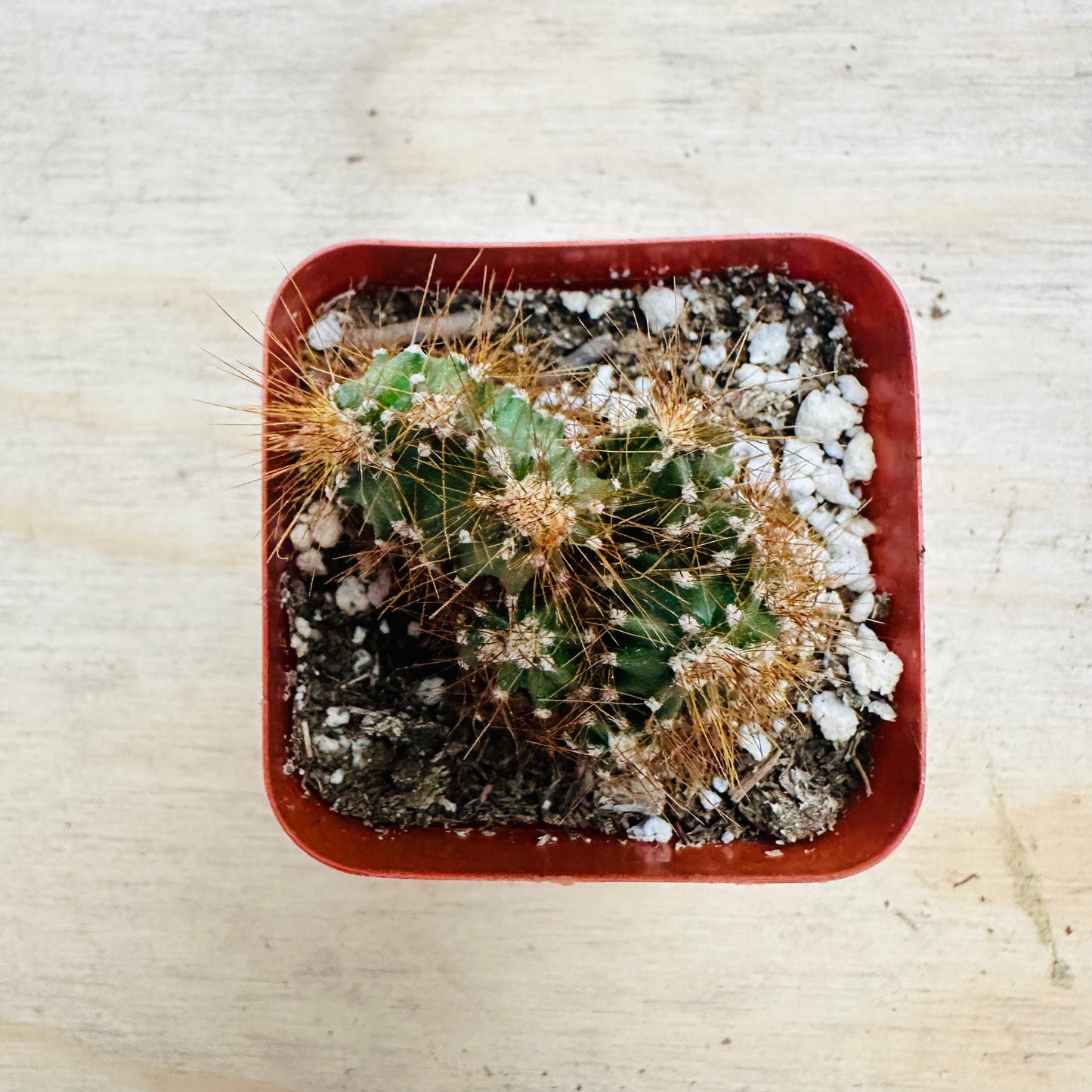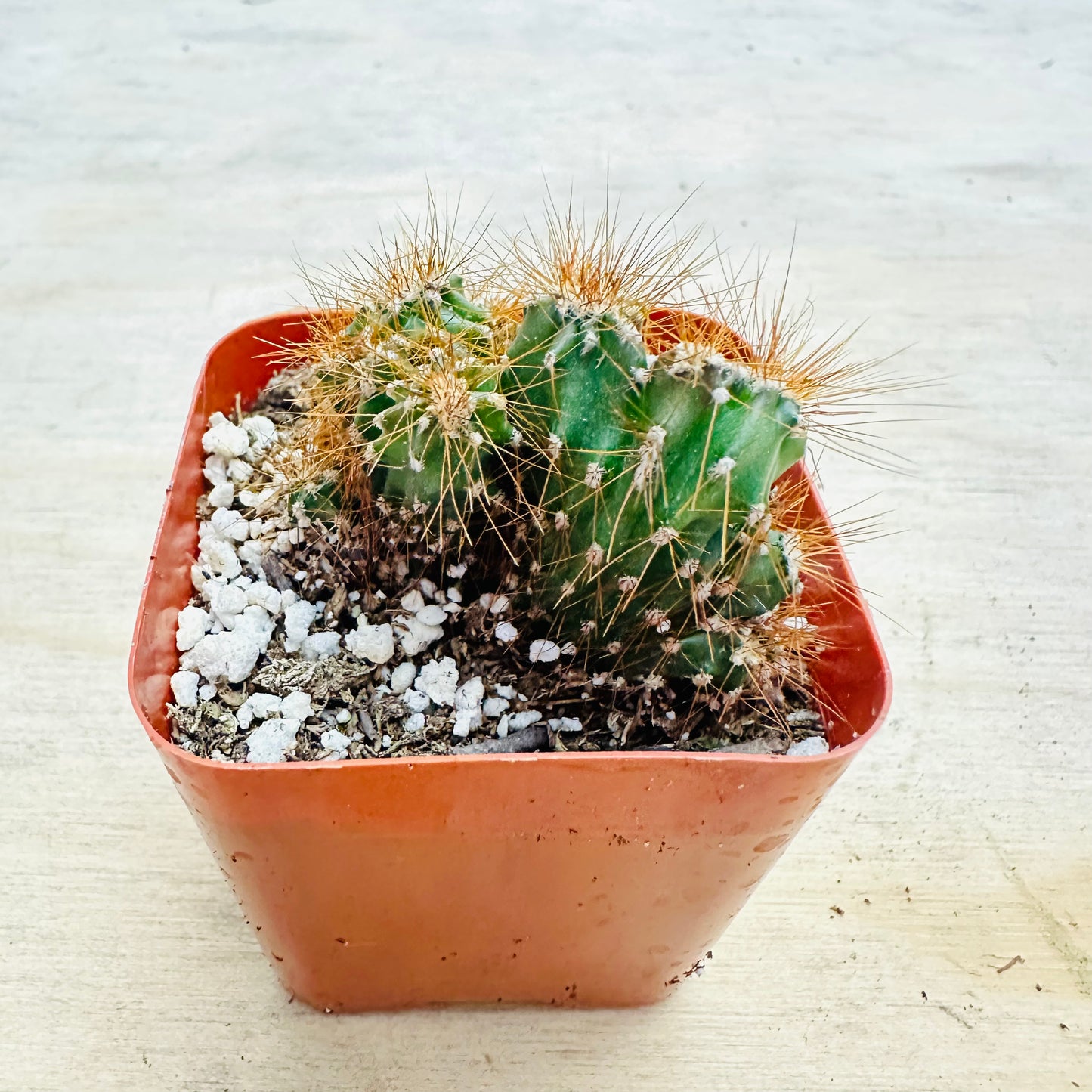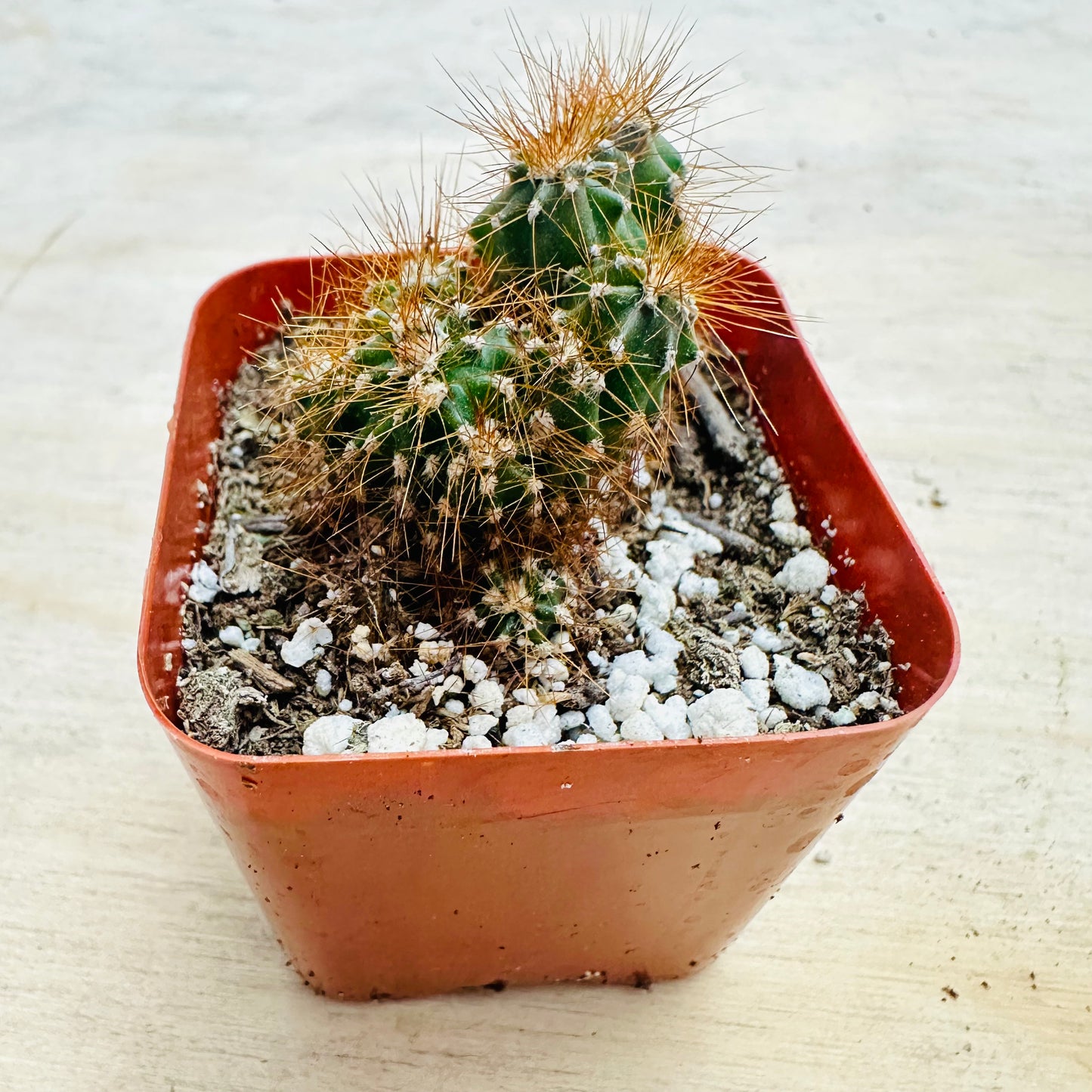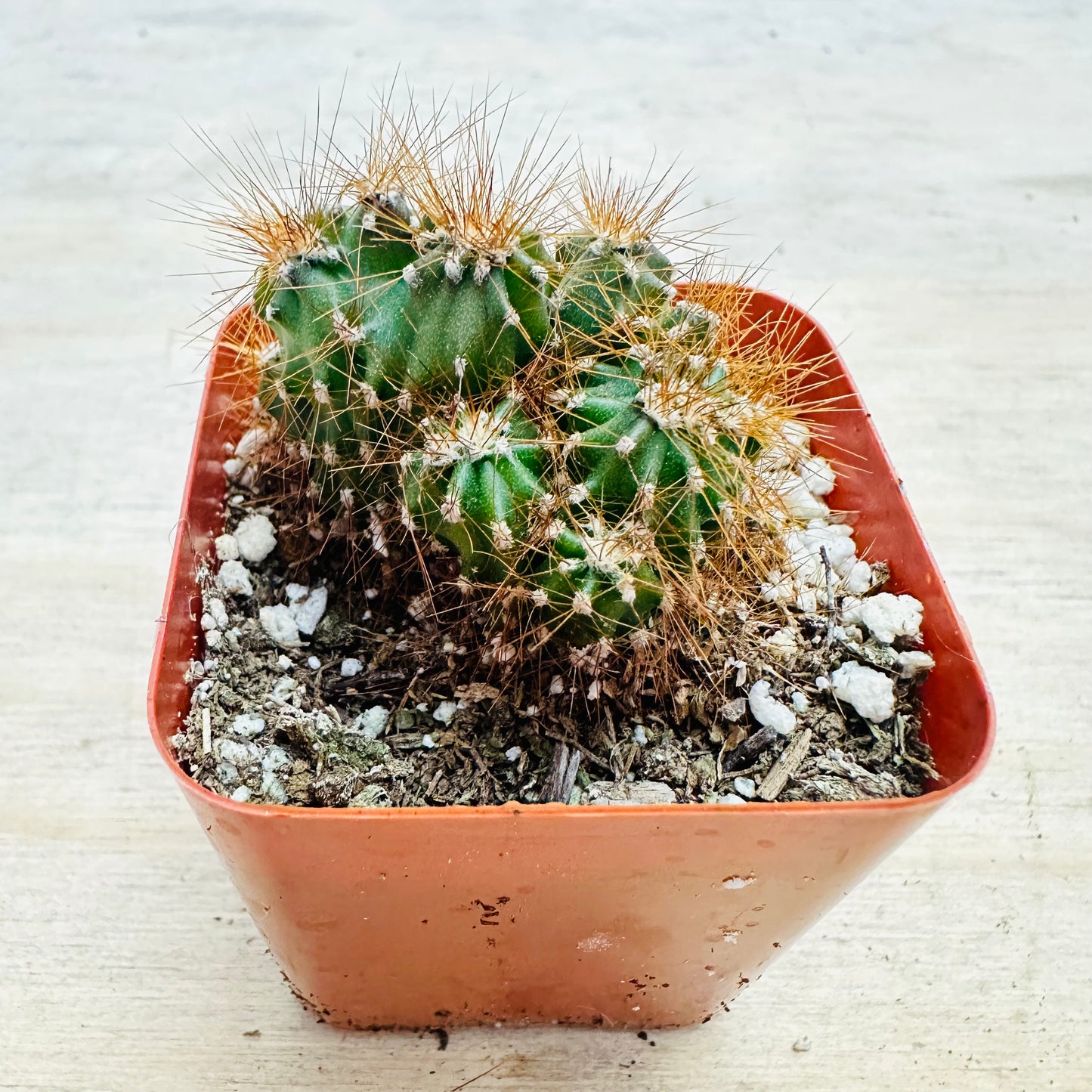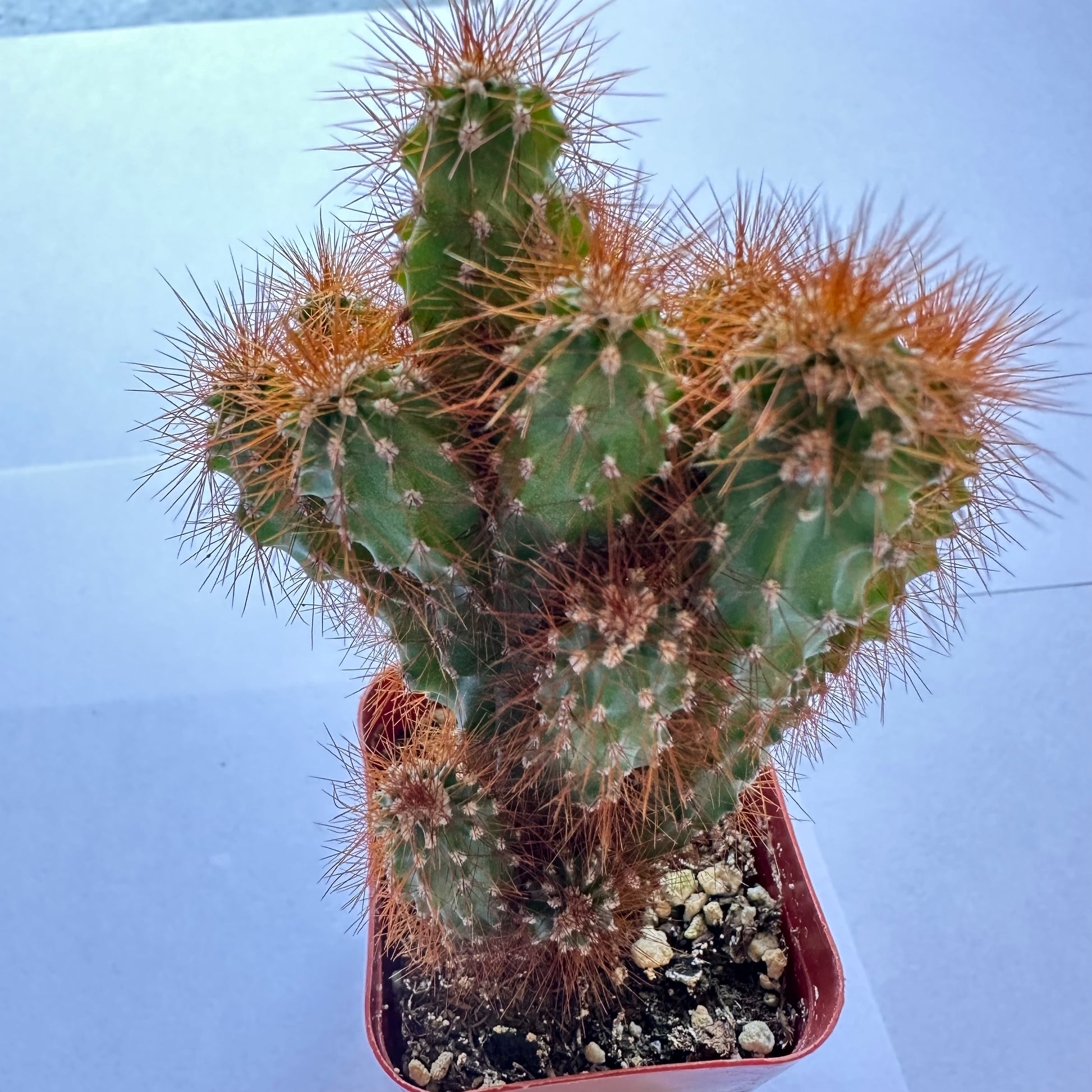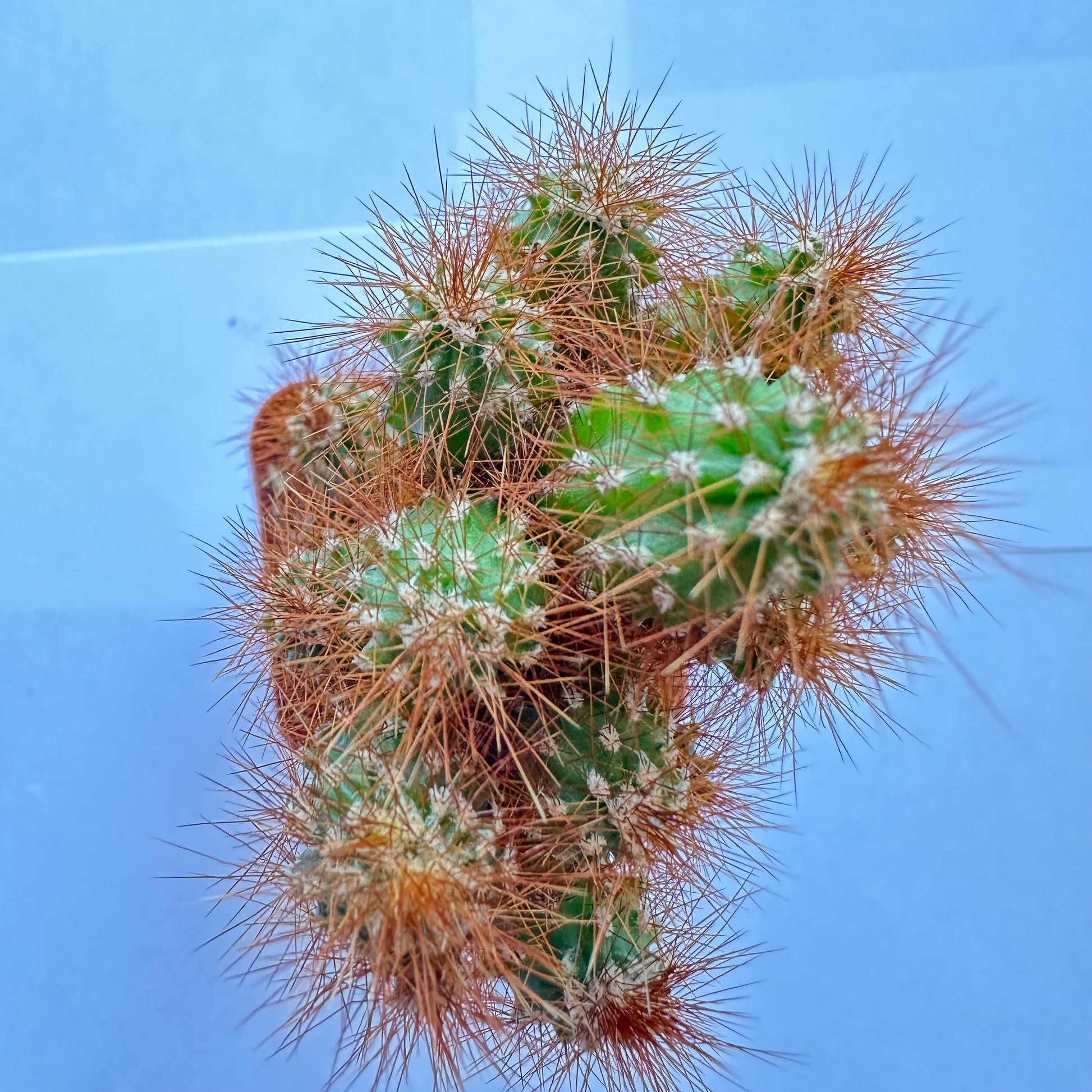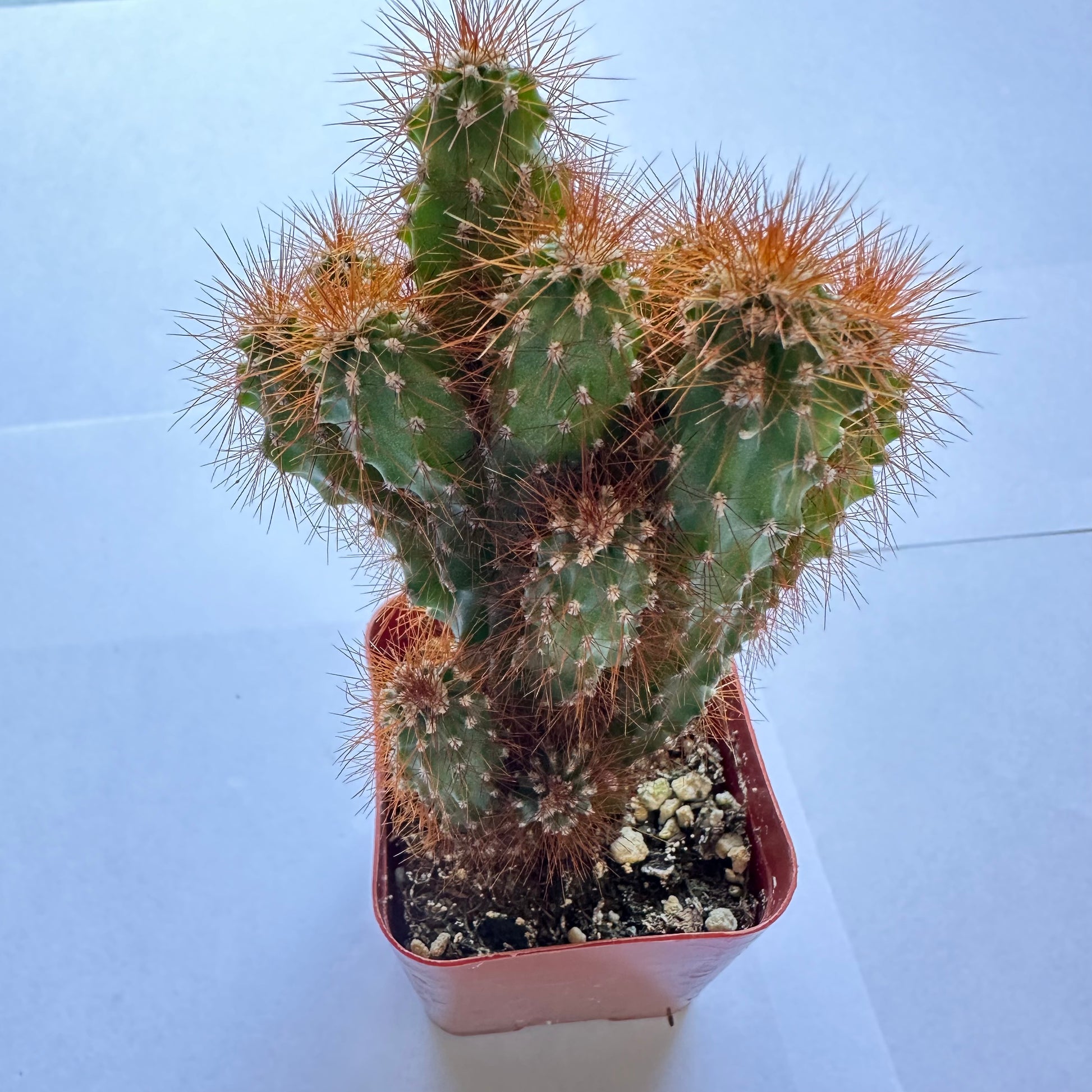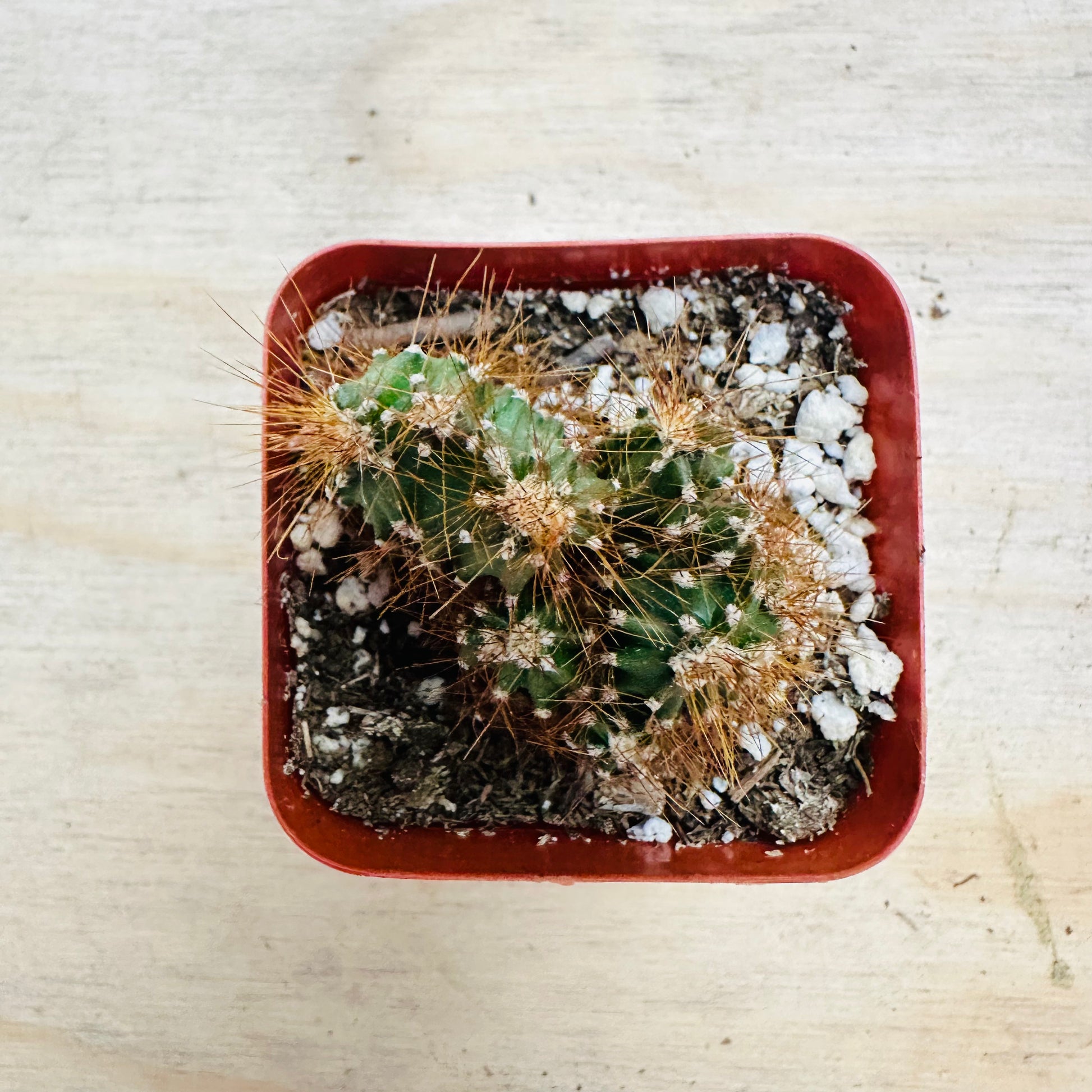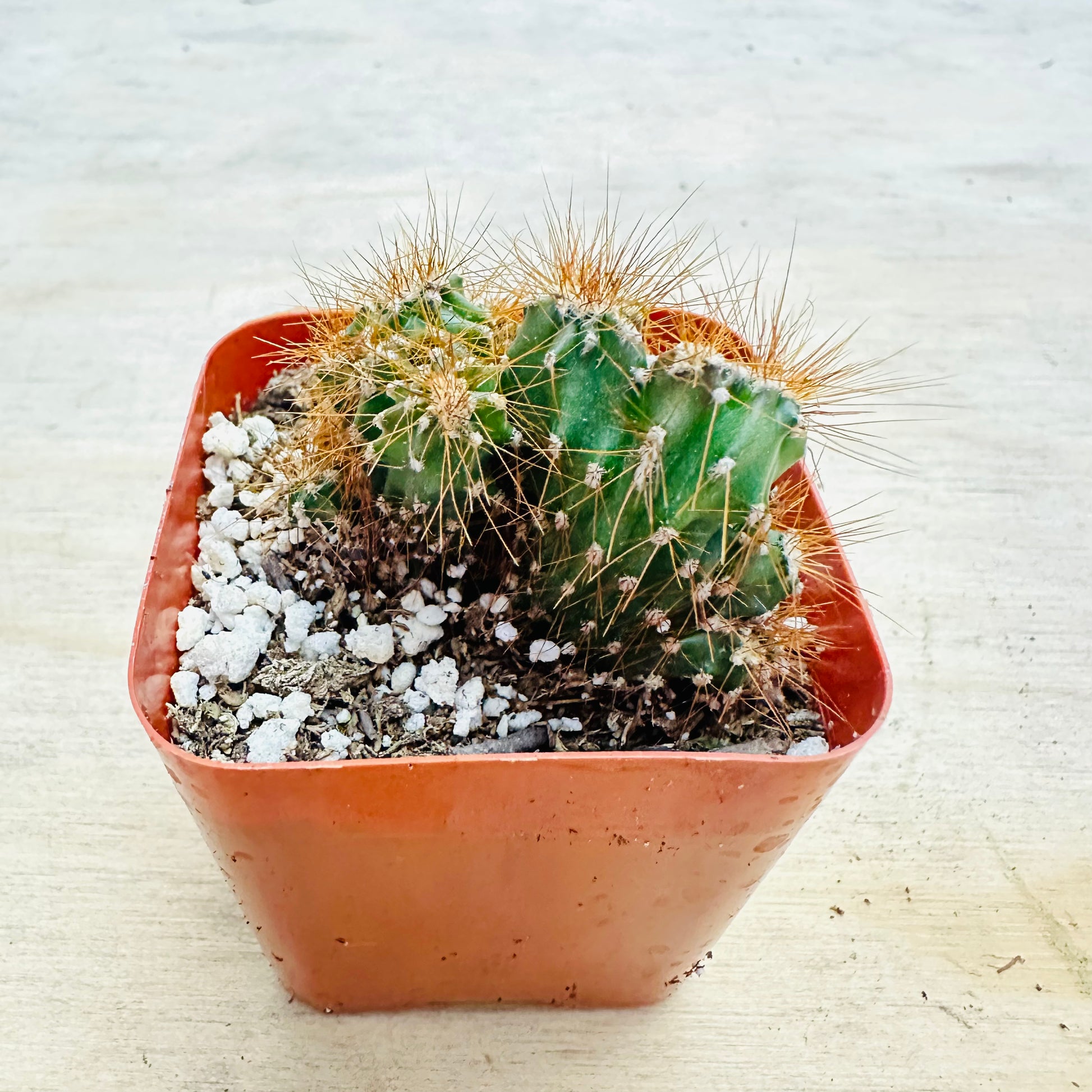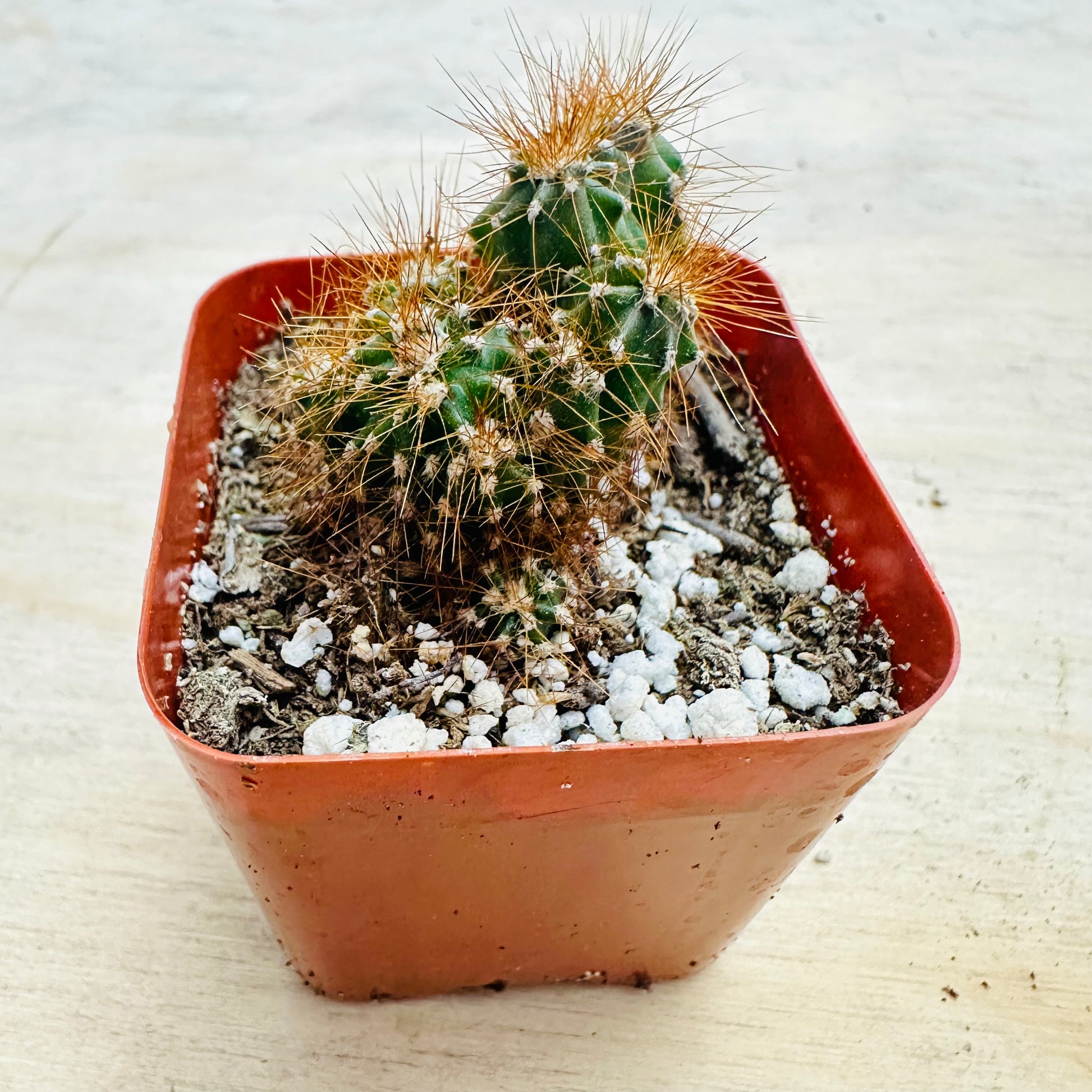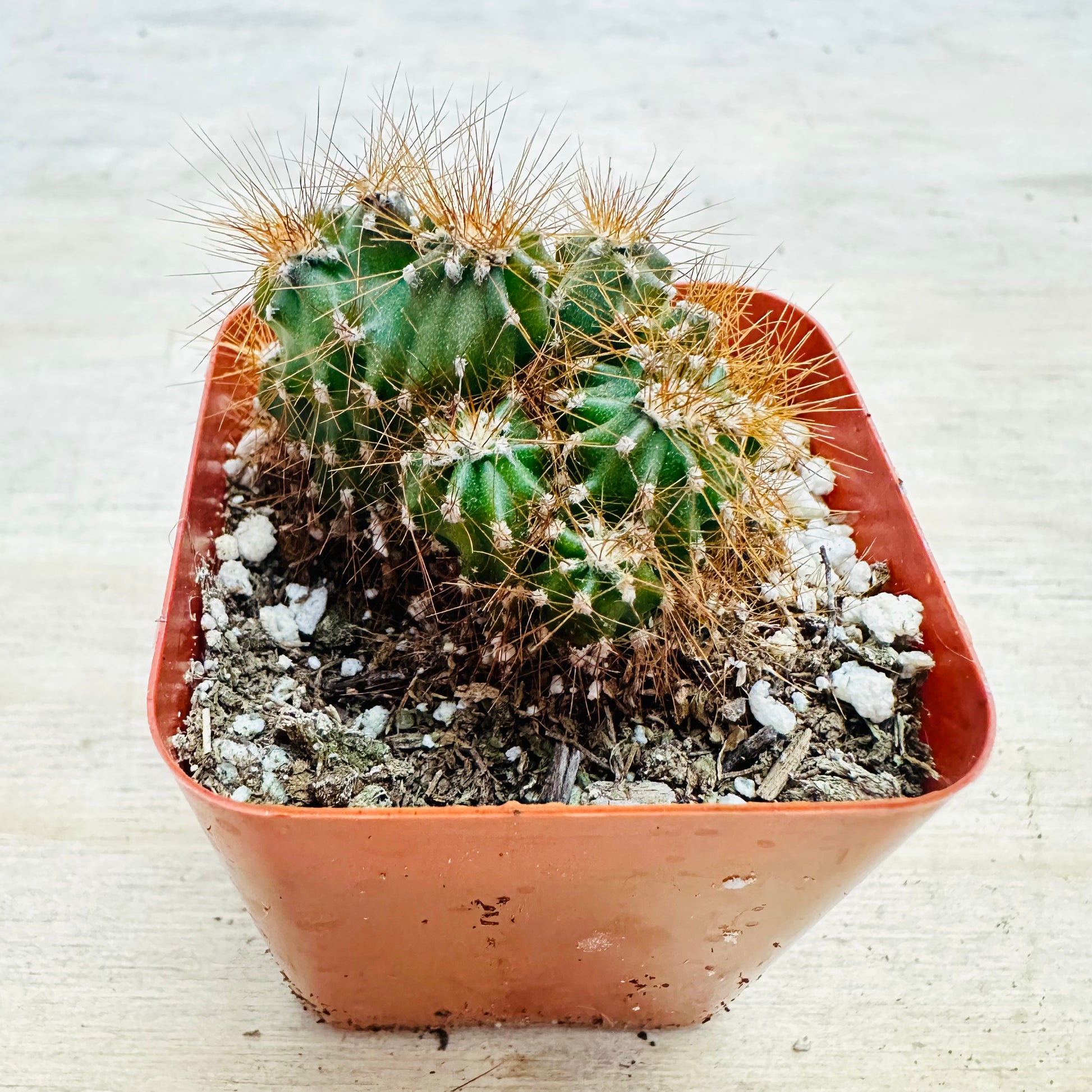Cereus peruvianus monstrose
Cereus peruvianus monstrose
In stock
Couldn't load pickup availability
📝 Description
Morphological Characteristics
Cereus peruvianus monstrose, commonly known as the Monstrose Apple Cactus or Monstrose Peruvian Apple Cactus, is a distinctive cactus species belonging to the Cactaceae family. This plant is renowned for its unusual, irregular growth patterns resulting from a natural mutation known as monstrose growth. The stems are thick, columnar, and display a twisted, knobby, or lumpy appearance with numerous protrusions and indentations, giving it a sculptural and architectural form.
The coloration of the stems ranges from blue-green to gray-green, often with a waxy coating that helps reduce water loss. The cactus may develop multiple ribs, and the areoles along the ribs bear clusters of sharp spines, so caution is advised when handling. During the blooming season, typically in late spring to summer, the cactus produces large, nocturnal, white to cream-colored flowers that are funnel-shaped and can reach up to 15–20 cm (6–8 inches) in diameter. These fragrant flowers open at night and may be pollinated by bats or nocturnal insects. If pollinated, the plant can produce edible, red to yellowish fruits known as Peruvian apples or pitaya, which contain sweet, white flesh with small black seeds.
Growth Habits
Cereus peruvianus monstrose is a slow to moderate-growing cactus that can reach impressive heights of up to 4.5–9 meters (15–30 feet) over many years under optimal conditions. It tends to branch irregularly, often producing multiple stems from the base or along the main stem. The monstrose form results in a more compact and contorted growth habit compared to the standard species. Native to South America, particularly Peru and Brazil, it thrives in arid and semi-arid regions with well-draining soils and plenty of sunlight.
Maintenance Points
• Lighting: Prefers full sun to partial shade. Adequate sunlight is essential for healthy growth and maintaining its unique form. In extremely hot climates, providing some afternoon shade can prevent sunburn on younger plants.
• Watering: As a desert cactus, it requires minimal watering. During the growing season (spring and summer), water thoroughly when the soil is completely dry. Allow excess water to drain away. In the dormant season (fall and winter), reduce watering significantly, perhaps once a month or less, depending on humidity and temperature. Overwatering can lead to root rot and fungal diseases.
• Soil: Use a well-draining cactus or succulent potting mix. Incorporate coarse sand, perlite, or pumice to enhance drainage and mimic the plant’s natural habitat. The soil should be gritty and not retain excess moisture.
• Temperature: Ideal temperatures range between 18–30°C (65–86°F). The plant is somewhat cold-tolerant for a cactus and can withstand temperatures down to -6°C (20°F) for short periods if kept dry. In regions with cold winters, it is best to grow the plant in containers that can be moved indoors or provide frost protection.
• Fertilization: Feed sparingly during the growing season with a balanced, water-soluble fertilizer formulated for cacti and succulents. Dilute the fertilizer to half the recommended strength and apply once a month. Avoid fertilizing during the dormant season.
• Potting: When growing in containers, select a sturdy pot with drainage holes to accommodate the plant’s potential size and weight. Terracotta pots are suitable as they allow moisture to evaporate, reducing the risk of overwatering. Repotting is typically necessary every few years or when the plant outgrows its container.
• Pruning: Prune to control size, shape, or remove any damaged or diseased stems. Always use clean, sharp tools to prevent disease transmission. Be cautious of the spines when handling.
• Support: As the plant grows taller, it may require staking or support to prevent leaning or toppling, especially in windy areas.
Reproduction Method
Cereus peruvianus monstrose can be propagated through stem cuttings and seeds.
1. Stem Cuttings:
• Selection: Choose a healthy stem segment during the warmer months for best results.
• Cutting: Using a clean, sharp knife or saw, cut a segment of the stem at least 15–30 cm (6–12 inches) long. Larger cuttings tend to root more successfully.
• Callusing: Place the cutting in a shaded, dry area for one to two weeks to allow the cut end to form a callus. This process helps prevent rot when the cutting is planted.
• Planting: Once callused, plant the cutting upright in a pot filled with well-draining cactus mix, burying it about 5–10 cm (2–4 inches) deep to support the cutting.
• Aftercare: Position the pot in a location with bright, indirect light. Wait about a week before watering lightly to encourage root development. Gradually increase watering frequency as roots establish over the following weeks.
2. Seeds:
• Sowing: Collect seeds from ripe fruits if available. Clean and dry the seeds before sowing.
• Planting: Sow seeds on the surface of a well-draining, sterile cactus seed mix. Lightly cover with a thin layer of fine sand or vermiculite.
• Germination: Keep the soil consistently moist but not waterlogged. Cover the container with a transparent lid or plastic wrap to maintain humidity.
• Light and Temperature: Provide bright, indirect light and maintain temperatures between 21–27°C (70–80°F). Germination can take several weeks to months.
• Transplanting: Once seedlings are large enough to handle, transplant them carefully into individual pots with appropriate cactus soil mix.
Additional Tips
• Pest Control: Monitor for pests such as mealybugs, scale insects, and spider mites. Early detection is key. Treat infestations promptly with insecticidal soap, neem oil, or appropriate pesticides, following the manufacturer’s instructions.
• Disease Prevention: Ensure good air circulation around the plant and avoid excessive humidity to prevent fungal diseases. Proper watering practices are essential—avoid wetting the stems and water the soil directly.
• Handling Precautions: Wear thick gloves and protective clothing when handling or pruning to protect against sharp spines. Be mindful of the plant’s size and weight when moving it.
• Edible Fruit: If the plant produces fruit, they are edible and known as Peruvian apples. Ensure fruits are fully ripe before consuming. Wash thoroughly and be aware of any personal allergies.
• Decorative Use: Due to its unusual and dramatic appearance, Cereus peruvianus monstrose makes an excellent focal point in xeriscapes, rock gardens, or as a potted specimen on patios and indoor spaces with sufficient light.
By providing appropriate care and conditions, Cereus peruvianus monstrose can be a stunning and low-maintenance addition to your cactus collection, offering unique architectural beauty and, potentially, spectacular nocturnal flowers and edible fruits.
🌿 Care Tips
Plant Care
Light
Water
Soil
Temperature
🌟 Note: It’s normal for succulents to appear slightly shriveled after shipping. They usually recover within a few days in a suitable environment.
📦 Shipping Info
Seah Shipping Policy
Effective Date: November 2025
This Shipping Policy applies to orders delivered within the continental United States (the lower 48 states). By purchasing from Seah, you agree to the terms below.
1) Shipping Cost & Free Shipping
- Automatic rate calculation: Shipping is calculated at checkout based on weight, destination ZIP and carrier rates.
- Free Standard Shipping: Orders $59+ (pre-tax, after discounts) ship free to the lower 48 states.
- Alaska, Hawaii, Puerto Rico & other territories: Not eligible for free shipping or standard flat offers at this time.
- Taxes/Duties: Applicable sales tax and any fees are shown at checkout.
2) Processing Schedule
- Business days only: We process and ship Monday–Friday. No shipping on weekends or U.S. federal holidays.
- Handling time: 1–3 business days after payment confirmation.
- Cut-off time: Orders placed before 3:00 PM (PST) are prioritized for same-day processing; others roll to the next business day.
- Changes/Cancellations: Email support@seah.co within 12 hours of purchase; after that, the order may already be in processing.
3) Transit Times
| Method | Estimated Transit | Total ETA (Handling + Transit) |
|---|---|---|
| Standard | 5–8 business days | 6–11 business days |
| Express | 3–4 business days | 4–7 business days |
ETAs are estimates. Weather, holidays, carrier delays or high-volume periods may extend delivery times.
4) Seasonal Temperature & Plant Safety
- Winter (Nov–Mar): We strongly recommend adding a heat pack at checkout to protect plants from freezing. Orders shipped without a heat pack during cold conditions are not covered for cold damage.
- Summer heat: During extreme heat waves, we may hold shipments until temperatures normalize. We’ll notify you if there’s a hold.
- Packaging: Plants are carefully packed (bare-root or potted by type/size) to minimize transit stress.
5) Carriers & Tracking
- We ship via USPS / UPS / FedEx, selected automatically for best service to your address.
- When your order ships, you’ll receive a tracking email. Tracking typically activates within 24 hours.
- If you haven’t received tracking within 3 business days, contact us at support@seah.co or +1 (626)-999-1314.
6) Address Changes & Delivery Issues
- Before shipment: Request address changes within 12 hours of ordering.
- After shipment: We can’t modify the address once dispatched. Please contact the carrier for redirection options.
- PO Boxes: Supported for USPS only; UPS/FedEx require a street address.
- Seah isn’t responsible for delays or loss due to incorrect addresses provided at checkout.
7) Service Area
We currently ship to the continental U.S. (lower 48 states). Orders to AK/HI/PR and other territories are not eligible for free shipping and may be restricted.
8) Support
- Hours: Mon–Fri, 9:00 AM – 5:00 PM (PST)
- Phone: +1 (626)-999-1314
- Email: support@seah.co
- Address: 7870 Margaux Pl, Rancho Cucamonga, CA 91739, United States
Thank you for supporting our California nursery—each plant is hand-selected and packed with care. 🌱
